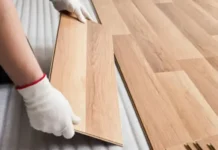Cracked walls are not something most people would want to assume. This is because cracked walls pose a significant threat to people living around the wall. While diagnosing the problem, it is essential to know the cause of the cracking wall. There are small and big cracks and can easily be repaired depending on the size and professionality required.
It is vital to hire a professional to repair cracks in your wall. A DIY won’t be able to examine the root cause of cracks and other underlying issues. Because cracks and splits can become severe problems over time, it is important to repair them as soon as possible. To begin with, if you are wondering how it happens, here is a brief explanation of why we have cracked walls.
Causes Of Cracked Walls
Aged Houses
Homeowners can expect normal wear and tear as their house ages. You may see wall cracks around doors and windows when this happens. Changes in the weather can cause the ground under your foundation to shift slightly. These small movements aren’t dangerous but can cause cracks in walls that might not be damaging initially.
Faulty Drywall Installation
Sometimes home builders don’t take as much care as they should. If you notice cracks in your walls from a recent home addition or your new home, it could be due to poor drywall installation. The drywall mud is used to join drywall panels at the seam during installation. The wall is then painted and covered with paper tape. The tape will begin to pull off if the stitching is not correctly sealed and filled. This will leave a small crack that can be seen as evidence.
Guide to Water Damage
Water damage causes cracks in your walls to turn yellow or brown. The Water can get in through leaky windows or roofs. This can cause your drywall to become softened, wetter, and eventually crack.
Reasons Why It Is Important To Fix Cracked Walls
Helps Prevent Extensive Damage
It doesn’t matter if the crack in your wall is internal or external. It’s important to consult a contractor to inspect the wall for any potential damage. You might have noticed cracks in the building; however, some cracks might go unnoticed as they are too small. These cracks will usually be visible at the corners of your structure.
If ignored, cracks in concrete walls can cause damage to the foundation or the building in the worst-case scenario. Concrete is made up of cement, water, and sand. The water evaporates, and the other ingredients are cured, forming a durable monolithic slab. The curing process can cause concrete to shrink, which may lead to wall cracks.
Larger concrete cracks occur when a building settles. This can also happen when the ground underneath the house shifts. These cracks are not dangerous to the house’s structure, but they can be a gateway for groundwater. This could create problems for residents. It is important to patch cracks and holes in concrete walls.
Never attempt to repair bulging walls or cracks that recur in your home. Cracks like these can lead to more serious structural problems. It is therefore important to reach out to a professional. In this case, hydraulic cement can be used to fill the concrete cracks.
It Protects People Living Around Or In The Building
Your family, tenants, and employees are all at risk if the cracked wall is not repaired. Even though the cracks might seem small and not dangerous, you should inform an architect and plan on getting it checked out. The architect will inspect the crack and come up with the best way possible to fix the cracks.
Saves Time And Money
It is important to understand that even large wall cracks can start as minor wall fractures. It is essential to seek professional help as soon as the cracks are noticed before it is too late. Doing this early on in the development of cracks in walls will help save a lot of time. This will also create ample time for repair. A good contractor will easily tell the root cause of the cracks, how to fix the cracks and what materials will be required to fix the cracks. This will save you a lot of money in the future.
Help Notice Any Underlying Problem
A professional inspection of cracks in the wall will reveal any dangers that contractors can prevent. After seeing a crack, it is advisable to mark it out with a pencil. This will help the contractor tell whether there is movement, how long the crack has existed, how many cracks, and how big the crack is.



































































